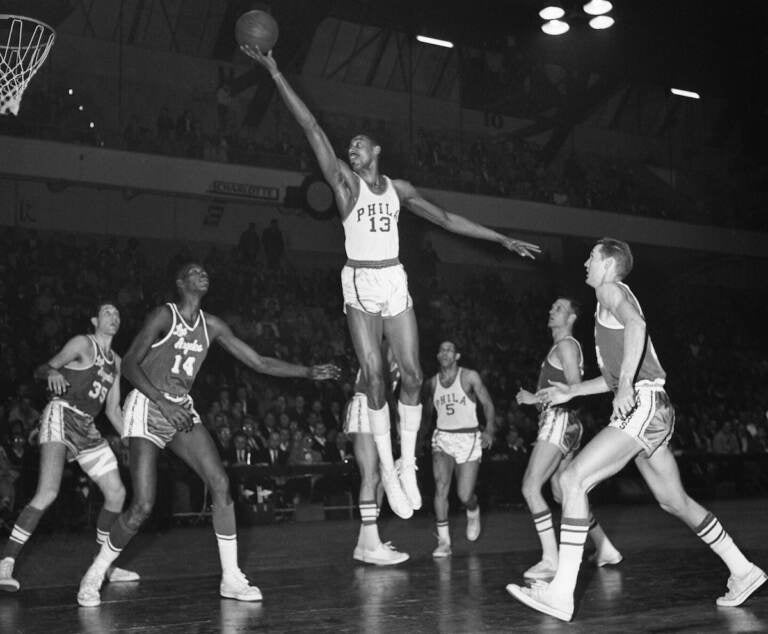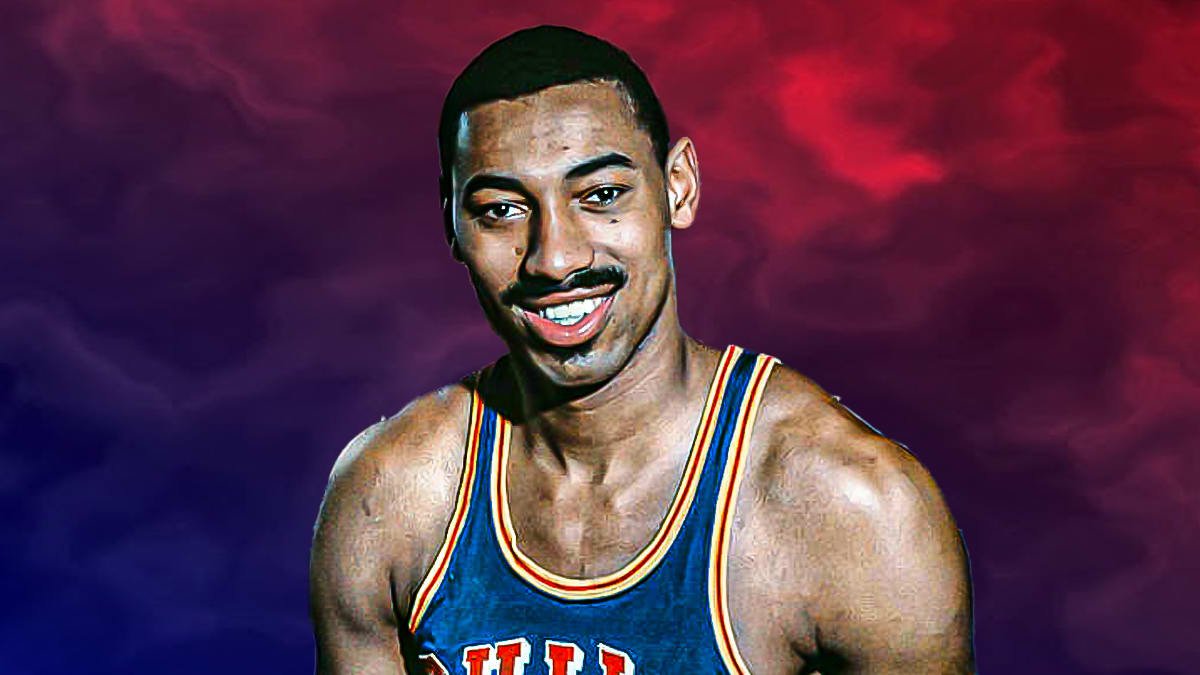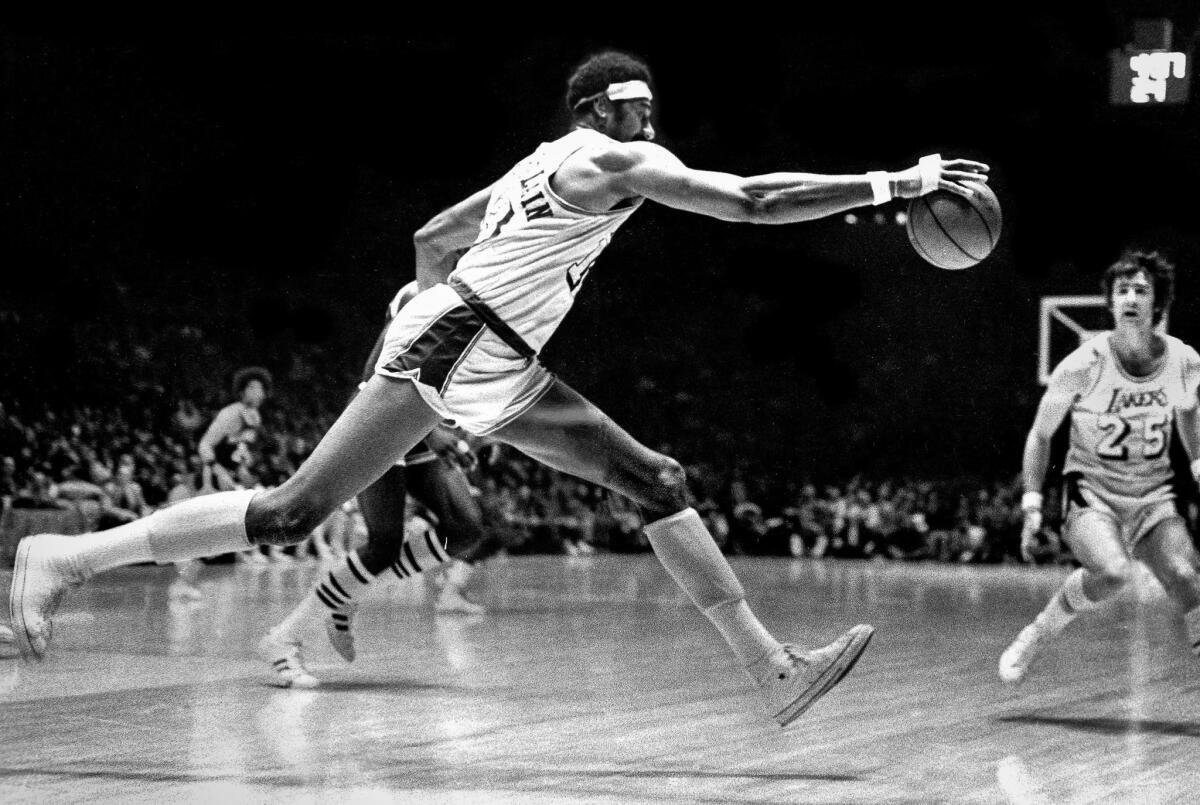Wilt Chamberlain (Part 3)
Wilt Chamberlain (Part 3)

In Chamberlain's junior season of 1957–58, his experience with the Kansas Jayhawks became increasingly frustrating due to opponents' tactics aimed at neutralizing his dominance on the court. Teams often employed freeze-ball strategies and deployed multiple defenders to guard him, making it challenging for Chamberlain to showcase his full potential. Despite these obstacles, Chamberlain still managed to average an impressive 30.1 points per game for the season.
However, Chamberlain's junior season was marred by health issues, as he missed several games due to a urinary infection. The Jayhawks finished the season with an 18–5 record, with three of their losses occurring while Chamberlain was sidelined. Unfortunately, KU's second-place finish in the league meant they were not invited to the NCAA tournament, bringing an early end to Chamberlain's collegiate career.
Despite the disappointment of not participating in the NCAA tournament, Chamberlain's individual performance did not go unnoticed. Once again, he was named an All-American, alongside future NBA Hall-of-Famers Elgin Baylor, Oscar Robertson, and Guy Rodgers.
Feeling disillusioned with NCAA basketball and eager to pursue a professional career, Chamberlain made the decision to leave college. He sold a story titled "Why I Am Leaving College" to Look magazine for $10,000, a significant sum at the time, especially considering that NBA players earned an average of $9,000 per season. Chamberlain's departure from college marked the end of his collegiate basketball career, during which he averaged 29.9 points and 18.3 rebounds per game over two seasons at Kansas.
Despite his relatively short stint in college basketball, Chamberlain's impact was significant, and he left a lasting impression on the sport. By the age of 21, he had already become a prominent figure, featured in various publications such as Time, Life, Look, and Newsweek, setting the stage for his illustrious professional career in the NBA.
After a frustrating junior year in college, Chamberlain was eager to pursue a professional basketball career. However, at that time, NBA rules prohibited players from joining the league until after their college graduating class had completed. Undeterred, Chamberlain sought alternative opportunities and decided to sign with the Harlem Globetrotters in 1958, where he would earn a substantial sum of $50,000.
Joining the Globetrotters provided Chamberlain with a unique platform to showcase his talents on a global stage. The team embarked on a highly successful tour of the Soviet Union in 1959, where they played in front of sold-out crowds. One memorable moment occurred when General Secretary Nikita Khrushchev greeted the team prior to a game at Moscow's Lenin Central Stadium, highlighting the cultural significance of the Globetrotters' tour.
Chamberlain's immense strength and athleticism were on full display during his time with the Globetrotters. In one of their skits, he famously lifted and tossed his teammate, Captain Meadowlark Lemon, into the air with ease, demonstrating his extraordinary physical prowess. Lemon, who weighed 210 pounds at the time, later described Chamberlain as "the strongest athlete who ever lived."
Despite his formidable abilities, Chamberlain cherished his time with the Globetrotters for more than just his on-court performance. In later years, he frequently joined the team during the off-season and appreciated the opportunity to entertain audiences without the pressure of breaking records or facing criticism. In recognition of his contributions, the Globetrotters retired Chamberlain's No. 13 jersey on March 9, 2000, honoring his impact both on and off the basketball court.
In the 1959–60 NBA season, Chamberlain made an electrifying debut for the Philadelphia Warriors, showcasing his dominance from the outset. In his first NBA game against the New York Knicks, he scored an impressive 43 points and grabbed an astounding 28 rebounds. Just two games later, he set a then-career-high with 41 points and 40 rebounds in a win over the Syracuse Nationals.
One of the most notable early matchups of Chamberlain's career was against Bill Russell and the Boston Celtics. Despite Chamberlain outscoring Russell in their first encounter, the Celtics emerged victorious, sparking what would become one of the NBA's greatest rivalries.
Chamberlain's remarkable performances continued throughout the season. He set numerous records, including scoring 50 points and grabbing 40 rebounds in a single game against the Detroit Pistons. By the end of his rookie season, Chamberlain had shattered scoring and rebounding records, averaging an astonishing 37.6 points and 27 rebounds per game. He was named both Rookie of the Year and MVP, solidifying his status as one of the league's premier talents.
In the playoffs, Chamberlain faced off against the Boston Celtics once again. Despite a valiant effort, the Warriors ultimately fell short, losing the series in six games. Following the playoffs, Chamberlain briefly considered retirement due to the physical toll of constant double and triple teams and aggressive fouls. However, he was persuaded to continue playing after receiving a salary increase from Warriors' management.
Chamberlain's rookie season not only left a lasting impression on the league but also signaled the beginning of a legendary career marked by dominance and rivalry with some of the NBA's greatest players.
References
- "Rule No. 9". October 15, 2018. Archived from the original on May 16, 2023. Retrieved May 16, 2023.
- ^ DuPree, David. "Wilt Chamberlain: A Tribute". NBA.com. Archived from the original on November 6, 2016. Retrieved August 20, 2010.
- ^ Ostler, Scott (February 12, 1989). "The Leaping Legends of Basketball". Los Angeles Times.
- ^ "At the foul line, where Wilt's myth and reality meet | Frank's Place". April 14, 2017. Archived from the original on February 13, 2023. Retrieved February 13, 2023.
- ^ Aram Goudsouzian (2005). ""Can Basketball Survive Chamberlain"" (PDF). Kansas History. Archived (PDF) from the original on March 5, 2023. Retrieved February 5, 2023.
- ^ Ralph Miller (1990). Spanning the Game. Sagamore Pub. p. 193. ISBN 9780915611386. Archived from the original on May 22, 2023. Retrieved March 22, 2023.
- ^ Cherry 2004, p. 47
- ^ "Men's Basketball". Kusports. December 27, 2007. Archived from the original on December 23, 2007. Retrieved January 26, 2008.
- Cherry 2004, p. 48–57
- "Wilt Chamberlain Biography". Naismith Memorial Basketball Hall of Fame. February 10, 2007. Archived from the original on February 16, 2008. Retrieved January 26, 2008.
- ^ "Triple OT: The 50th Anniversary of 1957 Championship | KUsports.com". www2.kusports.com. Archived from the original on December 24, 2022. Retrieved December 24, 2022.
- Cherry 2004, p. 68–71
- ^ "2023-24 Media Guide" (PDF). KUAthletics.com. Archived (PDF) from the original on November 10, 2023. Retrieved November 14, 2023.
- Schwartz, Larry (October 29, 1999). "A revolutionary force". ESPN. Archived from the original on November 2, 2019. Retrieved March 18, 2022.
- Lazenby, Roland (August 24, 2006). "Big Norman". HoppsHype. Archived from the original on January 3, 2008. Retrieved March 20, 2022.






































